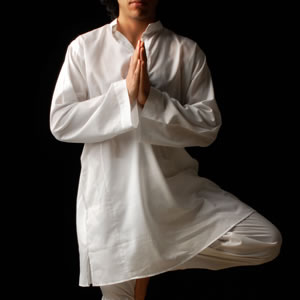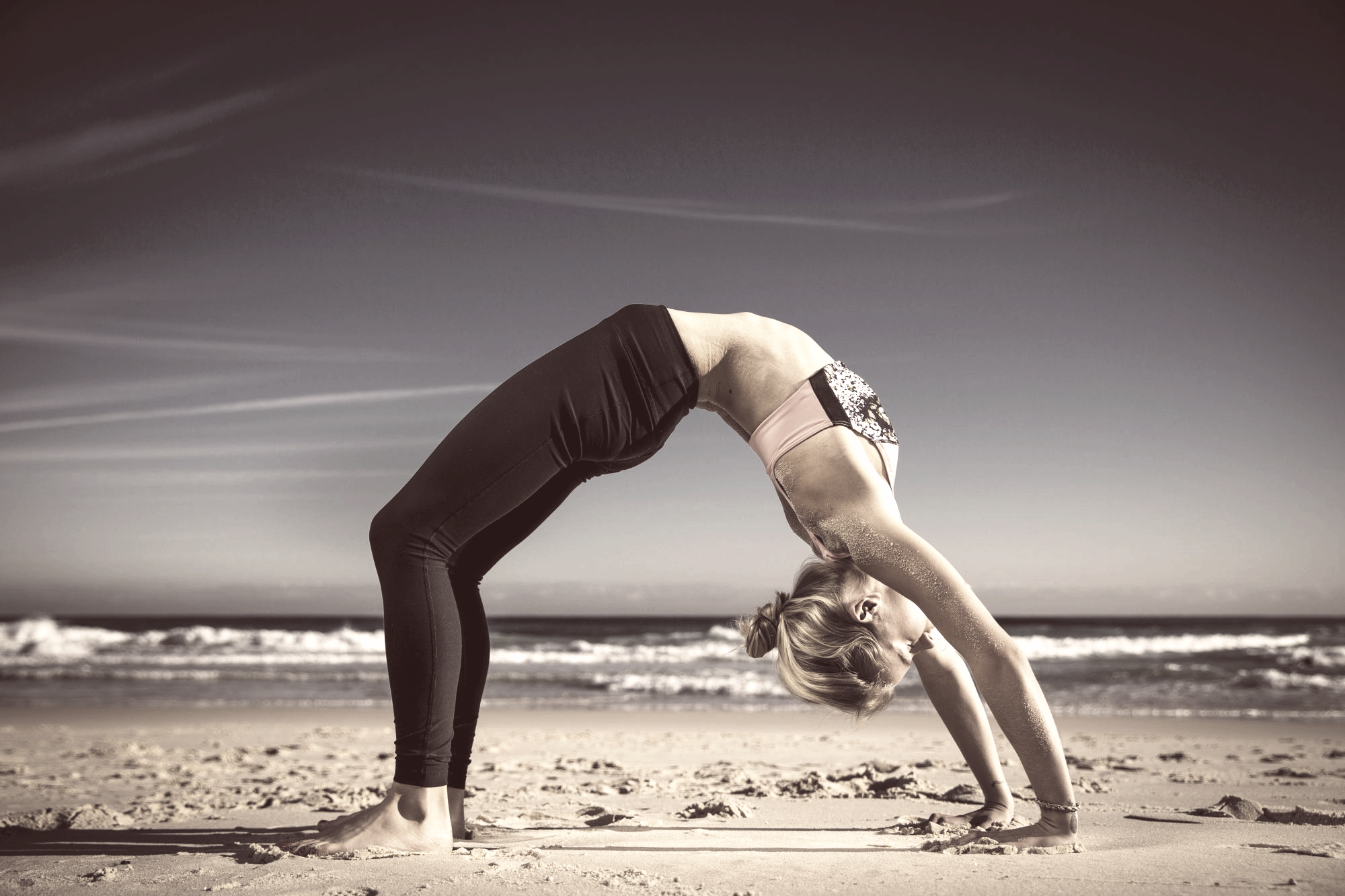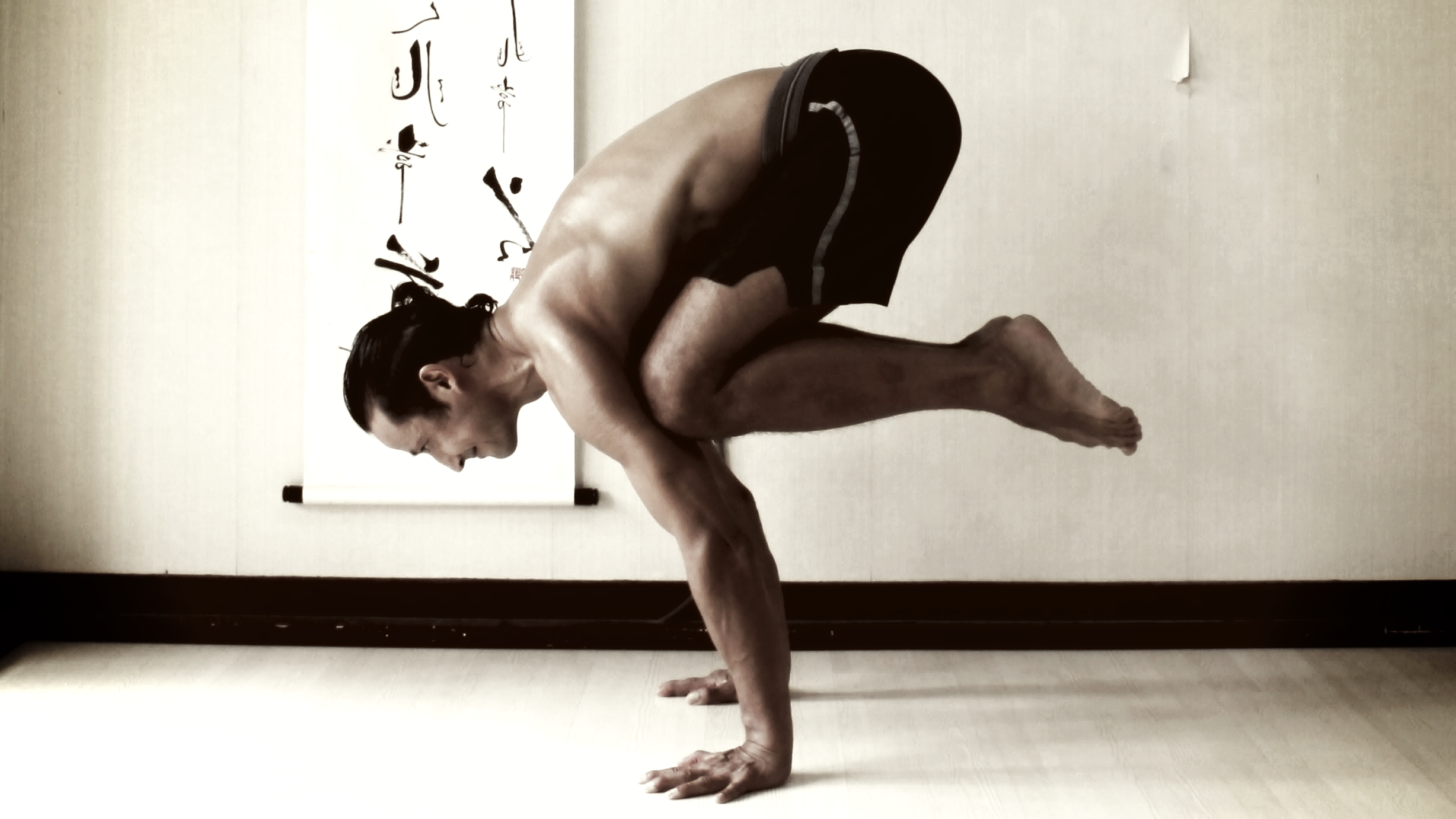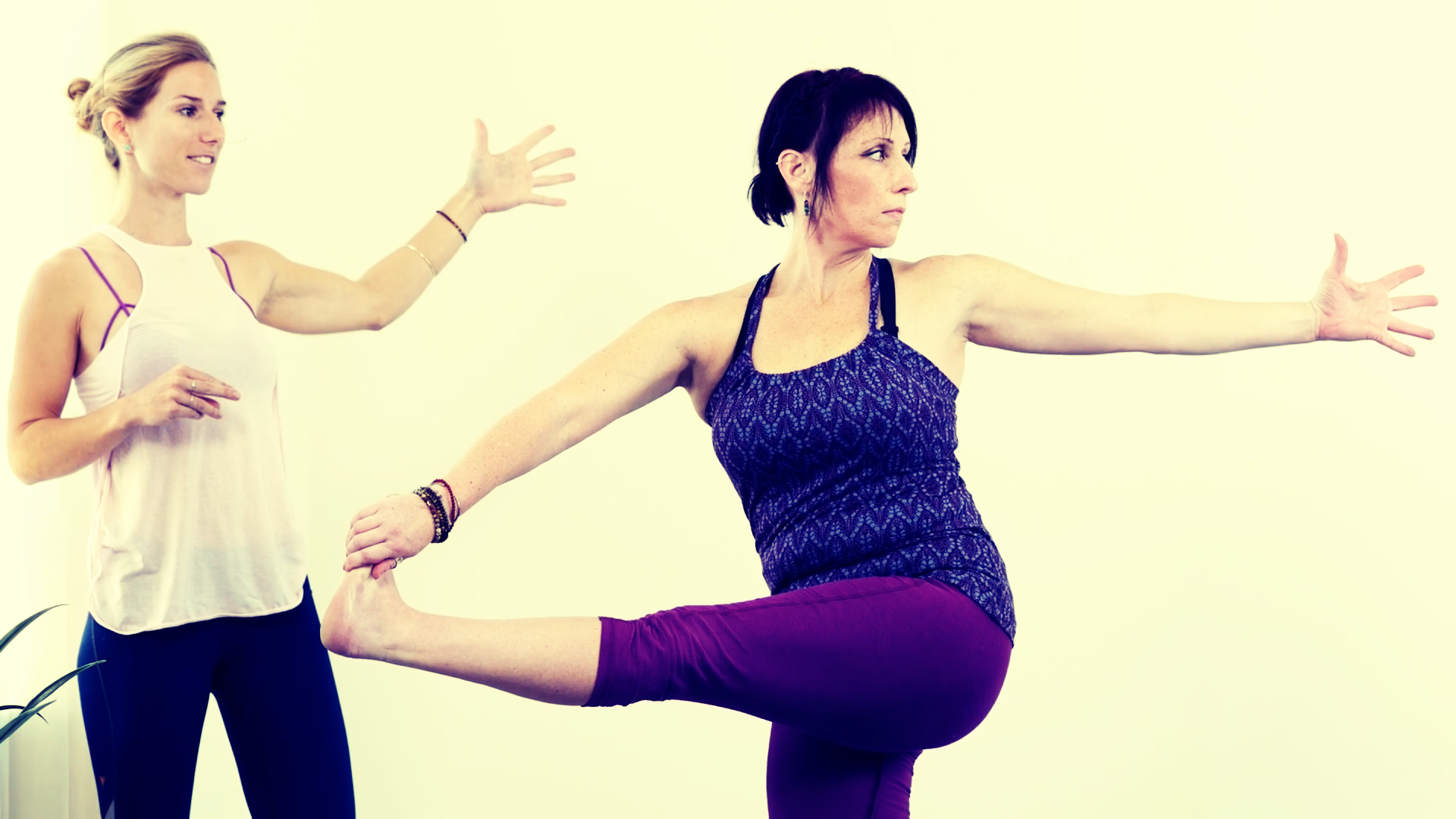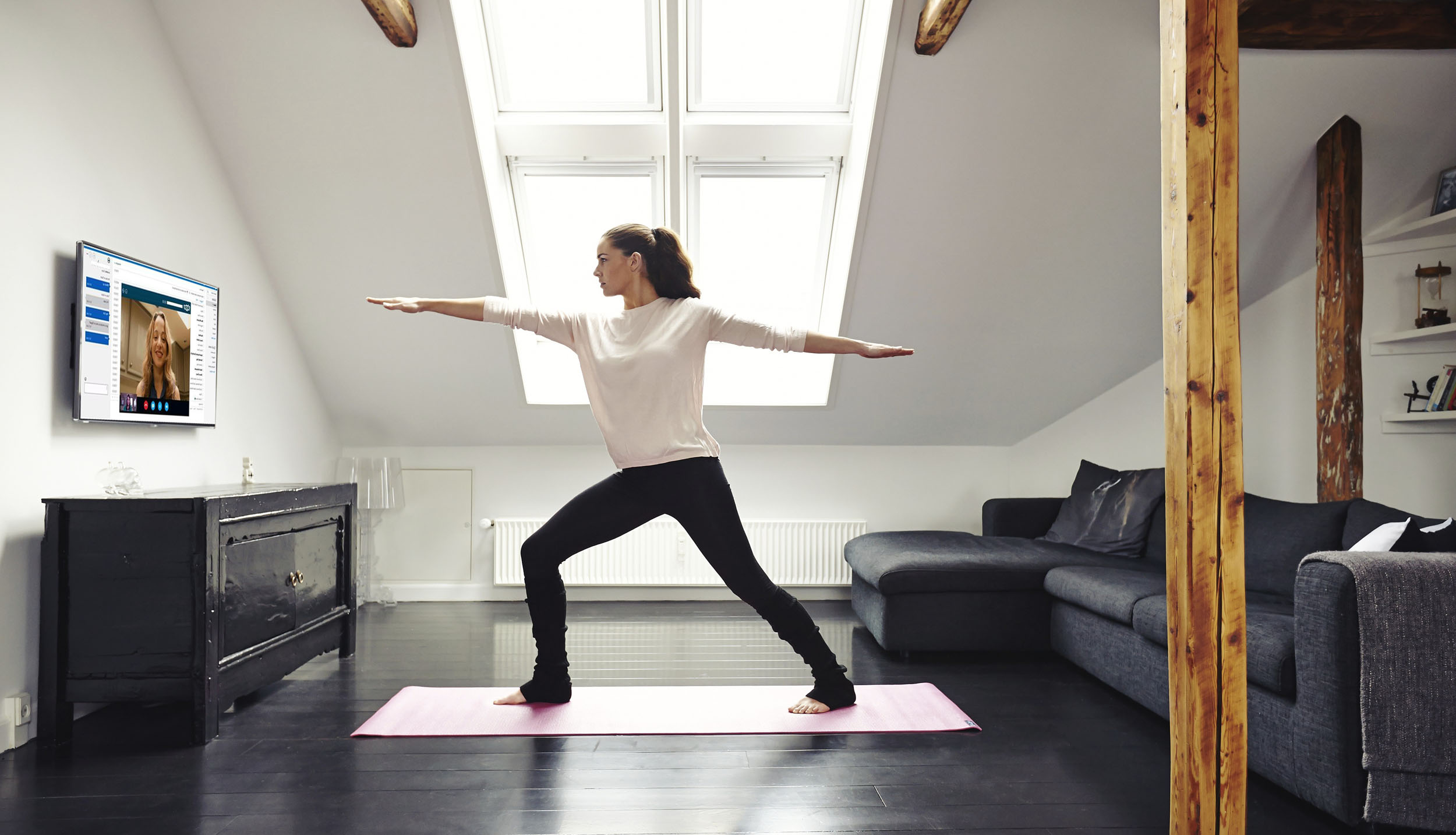Is yoga a woman’s world? According to a 2005 Yoga Journal market study, 77 percent of the yoga practitioners in America are female. Anecdotally, longtime teachers like Anusara Yoga founder John Friend and Power Yoga instructor Baron Baptiste, who both regularly crisscross the nation hosting workshops, believe the numbers might be even more skewed. After all, only about 1 in 10 subscribers to this magazine is male. “What I find myself constantly contemplating,” says Michael Lechonczak, a yoga instructor who teaches at Equinox Fitness in Manhattan, “is how to get more guys into class.”
It’s not that we don’t know what we’re missing. Nowadays, there seems to be a yoga studio on every corner; our girlfriends and wives are walking, talking testimonies to the practice. At home, we watch them rushing out the front door, brows furrowed, only to return standing tall, with big, tranquil smiles on their faces and compassion in their eyes. Because my wife Madeleine is a yoga instructor and an avid student, I witness this stress-to-bliss transformation several times a week. When she comes home, I often mumble to myself, “Don’t I want to be that happy?” Yet I haven’t practiced yoga consistently for years.
So I asked highly qualified doctors, scientists, and veteran yoga teachers exactly why so many men stick to yoga’s sidelines. I also polled members of that rare breed known as the male practitioner—from pro athletes to busy investment managers—to find out how they came to embrace yoga. In the end, I discovered social, physical, and emotional realities that discourage men from practicing. I also heard about the moments of inspiration that got men over such barriers—and ideas about what might help other men make the leap, too. If you’re a man who’s hesitated to try yoga—or you know a man you’d like to introduce to the practice—read on.
Get a man past his reservations about asana time with the ladies and he’ll still have a well-founded reason to drag his feet to a studio: Yoga can be painful.
Men, it seems, are naturally tight. Boys and girls may be born equally limber, with an ability to comfortably put their feet behind their heads. But by adolescence, boys generally lose flexibility faster than girls, and as boys become men, the differences in flexibility tend to grow. Researchers have noted this gap, although they can’t specifically link it to differences in hormones, musculature, or connective tissue. “It’s hard to attribute to any one thing,” says Lynn Millar, a professor of physical therapy.
Whatever is to blame, the typical man’s pursuits and lifestyle, from sitting at a desk all day to grabbing a quick pint , put little importance on flexibility.
Lasater says stretching takes a back seat in a male’s life as early as high school. “Look at the way they stretch in football—they push on each other and bounce. It hurts,” she says. “How could anyone emerge from that with a positive view of flexibility?” Investment manager Ron Bernstein was certainly ambivalent about stretching—until his 80-hour workweeks caught up with him. Back in 1998, Bernstein, a former competitive high school golfer who’s a managing director for the investment firm Marathon Real Estate in New York City, realized that “everything hurt,” he says. “My wife was doing some yoga and suggested that stretching would be good.”
Bernstein, 37, went to a class and muddled through. “On my walk home, my back felt so much better. All those Upward and Downward Dogs really worked.”

